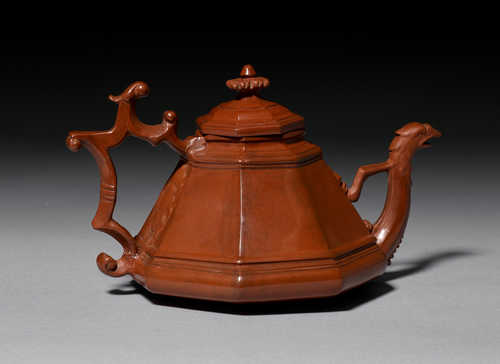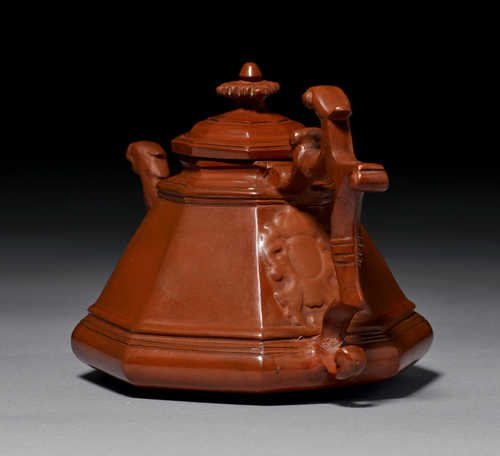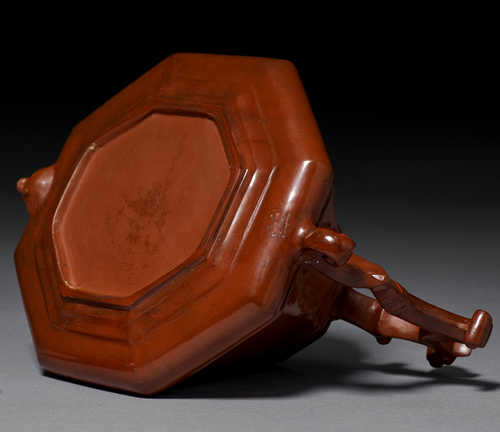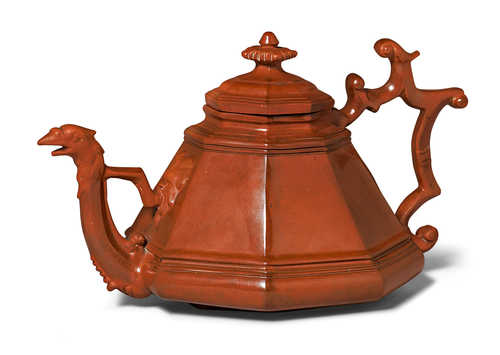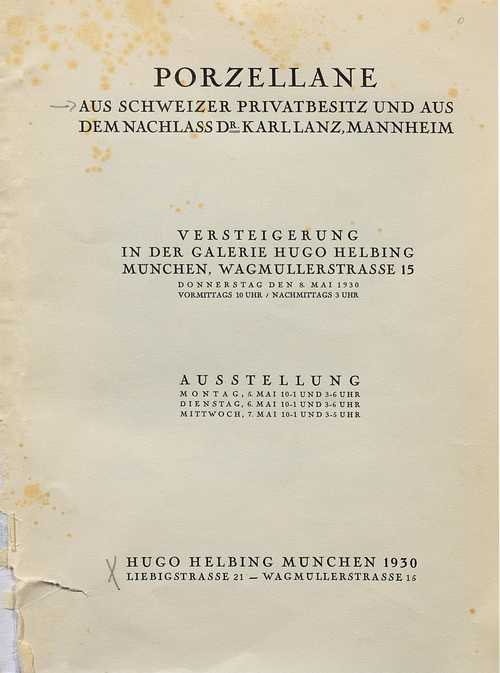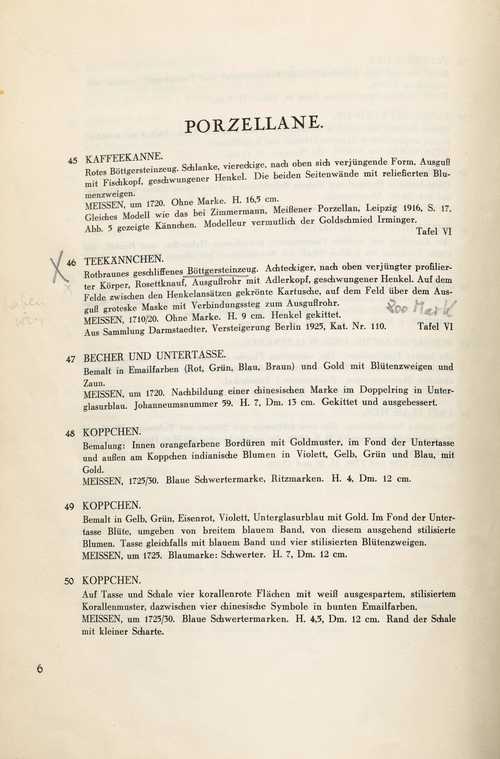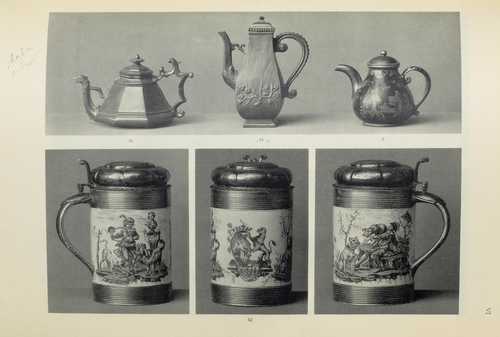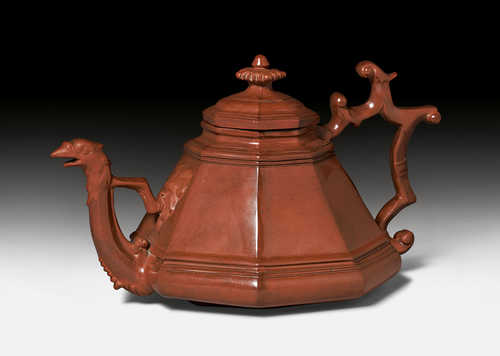
Lot 1729 - A186 Argenterie & Porcelaine - mardi, 25. septembre 2018, 16h00
BÖTTGER STONEWARE TEAPOT AND COVER,
Provenance:
- Ludwig Darmstaedter Collection, Berlin, Rudolph Lepke Berlin, auction 24-26 March 1925, cat. no. 110. ill. pl. 29.
- Swiss private collection, Galerie Hugo Helbing, Munich, auction 8 May 1930, cat. no. 46, ill. pl. VI.
- Acquired from the above and hitherto in a private collectin, Basel.
In an inventory of the factory in 1711, this form was listed as an "8Bassige Thee Krügel mit Adler Schnäutzgen".
Comparable pieces: Claus Boltz, Steinzeug und Porzellan der Böttgerperiode. Die Inventare und die Ostermesse des Jahres 1719, Keramos 167/168, 2000, p. 110 ill. 135 (today Ludwig Collection, Bamberg). The Bamberg teapot is listed in an inventory that was compiled after Johann Friedrich Böttger's death on 13 March 1719. This inventory included the entire stock of Böttger's brown and white wares in the royal store rooms in Dresden, in Böttger's private rooms, in the factory and in the royal store rooms for the Easter Fair in Leipzig; a further comparable example: Victoria & Albert Museum, London, inv. no. C.108 & A-1940.
The story of the stoneware invented towards the end of 1707 by Johann Friedrich Böttger forms the prelude to the founding of the Meissen Porcelain Manufactory in 1710 by Augustus the Strong. The invention of the "braunen oder roten Porcelains" or polished and cut "Jaspis Porcelain", was made possible by a group of experts under the leadership of the physicist von Tschirnhaus, through the Freiberg specialist in mineralogy Pabst von Ohain and the inventive spirit of Böttger. Böttger needed the time up to first major, salable production for the Easter Fair in 1710 in order to find the right compound preparation. For artistic direction he engaged the goldsmith Johann Jakob Irminger. From the archive records of the period, it appears that this early production of Böttger stoneware was already discontinued c. 1713, as the new, white glazed porcelain was extremely sought after and there was hardly any more demand for the so-called brown. (H. Krieger, Aus Norddeutscher Sicht: Meissen und Neues zum Böttgersteinzeug, Keramos 167/168/2000,p. 157-173).
CHF 12 000 / 18 000 | (€ 12 370 / 18 560)
Vendu pour CHF 43 700 (frais inclus)
Aucune responsabilité n'est prise quant à l´exactitude de ces informations.

